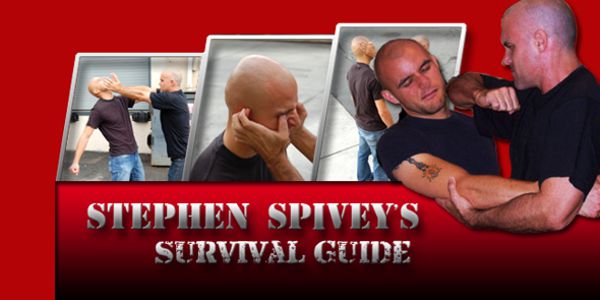Our society is becoming more violent. Violent crimes increase daily and yet, our world is more integrated than ever. We travel more, commute from home to work, and are out and about more than our grandparents or even our parents were. So, the question is: how will you prepare to be out in this world, as it presents increasing risks to your own personal security? You are taking steps, such as reading this article, to educate yourself. But what type of Self defense training will that education lead you to choose?
A New Way of Thinking
Here is a bold statement – self defense is not rocket science. In its simplest form it should be a natural flow of devastating strikes and movements. No matter what you hear from the up-teen million experts on the subject, it breaks down very simply. Protect your life at all cost, using the most devastating forms of hand to hand that you can. It would be nice if we had 10 years to train in Kung Fu and a red pill to take to become a combination of Bruce Lee and Neo from the Matrix, easily rendering our aggressor harmless while gliding through the air. However, that is not reality, and it never will be, no matter who you are.
Train off the principle that, when under an aggressor’s attack, your body will only allow you to utilize gross motor skills, i.e., simple movements. You cannot perform intricate jump-spinning back kicks and other gravity-defying movements with success when under duress. In addition to requiring a ballet of choreographed movements, certain martial art schools impress upon the student that he must be prepared to defend himself after he is physically attacked. Such reactive, versus proactive, training is not effective and relying on it can be costly and dangerous. In fact, the best defense (with a new spin on an old saying) is a good offense.
In addition to advocating easy-to-execute training, the author has designed the following A.D.D. formula for recognizing, processing, and dealing with possible physical attacks:
(A) Avoid compromising situations. Be aware of your surroundings.
(D) Dissuade any potential aggressor with verbal commands and body language.
(D) Decimate your aggressor with devastating strikes.
Crucial Points in Self Defense:
1. Violent encounters require that you become a conqueror, a warrior who does not accept defeat. Here is a good mental note to take with you in your training. Whenever you go for your self defense training, go into it with a gladiator’s mindset. This means you must train with intensity!
2. When you go through a mock attack (and it is a must to find an instructor who trains in this manner!) employ the mindset that you are really being attacked. This will allow you to download a trained response onto your hard-drive for future use. So if the worst case scenario happens, you are prepared.
3. Students should be taught that, once they determine someone is an aggressor, they must use an “offensive” defense to control the attacker. The aggressor always presents biological giveaways such as clinched jaw, clinched fist, overall body posture, closing of distance, or verbal aggression before an attack. Once you identify these signals, you unleash preemptively with a barrage of debilitating strikes.
4. This next point is vital – a violent attack must be met with a violent response greater than what was delivered by the attacker. An equal and opposite reaction will not suffice. This will ensure that your attacker knows you have a “do not go gently” policy and in fact, you have turned the tables and you are now the aggressor. This is psychologically defeating for the attacker.
When you were deciding what you wanted to do in life, you more than likely prepared yourself for it. Whether it was through college, self-education, finding a mentor, you took steps to prepare for the future. Take this life principle and apply it to your education in self defense. You will be surprised how little time it takes for you to protect your most valuable asset.
Finally, remember this: there is no such thing as fighting dirty when it comes to life or death, so when the time comes for you to engage, be prepared and give it everything you have. Find an instructor who teaches you to manipulate the body’s vulnerable areas such as the eyes, ears, throat, neck, and groin. Once you have identified an instructor who emphasizes simple movements, who is teaches an offensive form of self defense, and who does not shy away from teaching you to defend yourself at all cost, you will know you have done your homework completely! All that remains is to train like you mean it!


